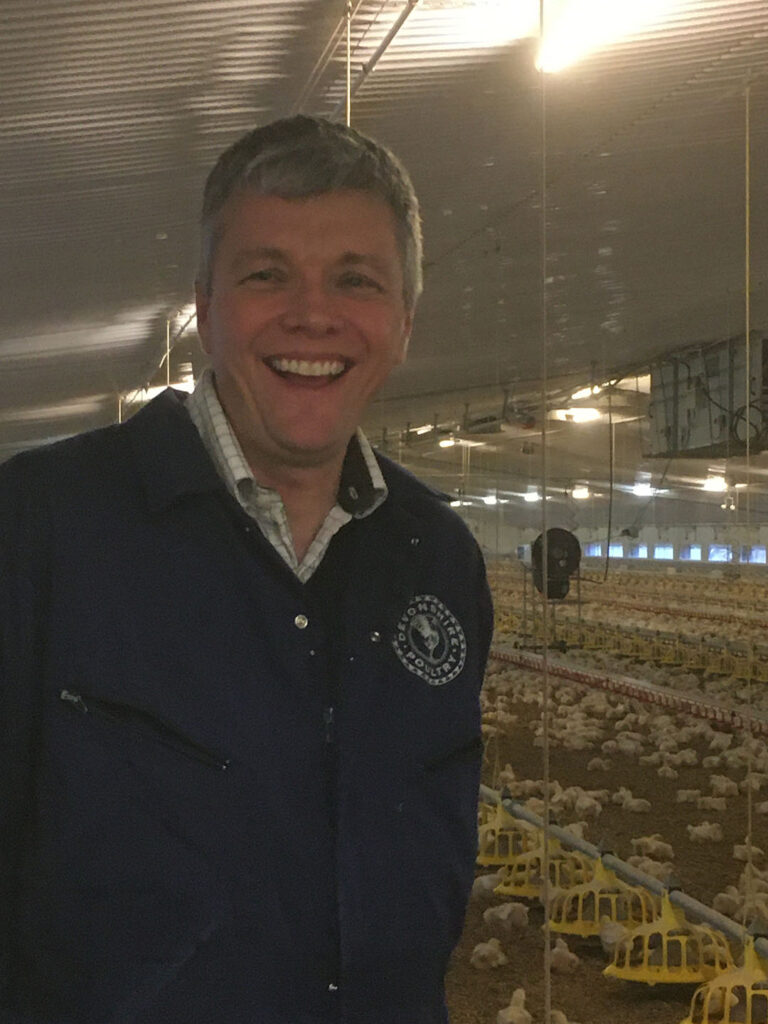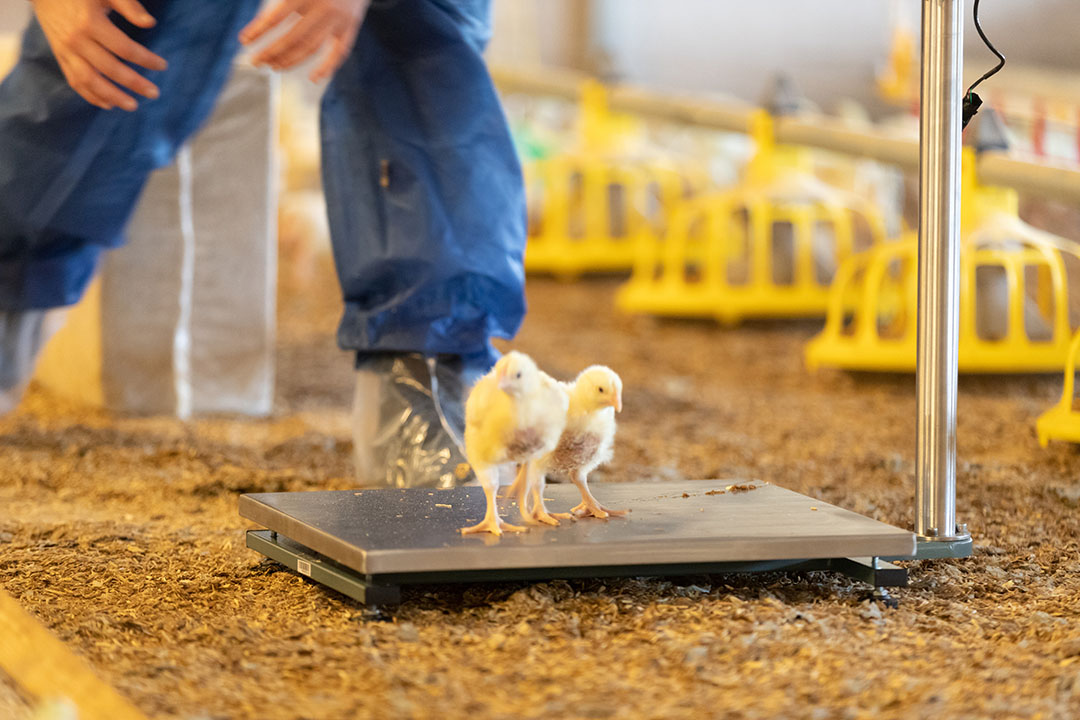Real-time data drives progress in the broiler sector

Broiler farmer, Robert Lanning, has always been a strong believer in remote monitoring technology and has been using it on his farms in Devon in the UK for 4 years now. He was eager to install the technology on a new site in Wiltshire which was facing problems.

Expansion plans are on the horizon for UK firm Poultry Sense, which collects real-time data to inform intelligent on-farm decisions and enhance supply chain visibility. The company, acquired by MSD Animal Health last year, is moving into markets with pilots on farms in the US and Brazil. And it will be taking its wireless system that feeds accurate, live data across a wide range of bird welfare measures through IoT (Internet of Things) hardware into the Far East Thai market later this year.
The hardware includes the Sense node: a wireless battery sensor able to provide temperature and humidity data; the Sense node+ which includes a next-generation rechargeable wireless sensor which monitors environmental parameters, such as air pressure, humidity, temperature, lux and CO2 levels; Water sense +: an ultrasonic recording system and Weigh sense +: a portable weighing platform that is cellular and LoRa-enabled to provide accurate real-time information.
Gateway for analysis
The gateway collates all the information collected by the sensors which is then shared through a Cloud application and fed into the software platform for further analysis. The environmental sensors tend to be attached at bird height to provide the most accurate data analysis, while the water sensors are attached to water lines, the weighing platforms are installed on the floor of the shed to allow birds to naturally walk over them to enable a continuous data flow.
Alan Beynon, Poultry Sense MD, said getting the correct number of sense nodes was important. In a typical shed housing 30,000 birds he recommended 1 node per 1,000 birds covering temperature and humidity and 1 node per 10,000 birds covering air pressure, CO2 levels, lux, temperature, humidity and weighing platform.
Micromanaging
Variations in environmental conditions in a poultry shed can be significant so sensors should be equidistant so that sheds can be split into zones to micromanage specific areas. Any troublesome areas can be quickly identified and appropriate action taken to correct any problems before they become a big issue. Accurate performance records across the shed can also help to show trends – with farmers able to log-in through their own system anytime they wish. This can help to really enhance bird performance and farm sustainability.
Beynon is keen to target integrators, so that companies can monitor and benchmark how farms are faring over a number of sites, as well as individual farmers. But there is also potential for hatcheries and broiler breeders, too. And with retailers showing increasing interest in bird welfare, there is considerable expansion potential. Barry Thorp, veterinary consultant to Poultry Sense, said the technology was a real game-changer for the health and welfare of the birds. The real-time data could identify minor differences that might otherwise go undetected. Access to real-time data also helps maximise opportunities when it comes to genetic potential and market demands, added Dr Thorp.

Farm installation
Broiler farmer Robert Lanning was eager to install the technology on a new site in Wiltshire which was facing problems. Lanning recently bought a 220,000 bird broiler farm in Wiltshire. The farm was previously experiencing poor EPEF results (European Broiler Index) and inconsistencies in bird weight gain and feed conversion efficiency, leading to an unprofitable margin per metre per week. He identified a number of areas that needed improving, including ventilation, access to water and water quality, which were affecting the birds’ gut health. Poor gut health was in turn leading to reduced water and feed intake and hindering overall bird performance.
He improved the heating supply inside the poultry houses to increase the number of kilowatts to achieve a consistent temperature in the shed. Then he installed 25,000 drinking cups to the water line to catch the drips to create a higher water pressure to encourage better water intake – but the issue was, in fact, poor water quality due to contamination in the header tank. A new water sanitising system was fitted but still no real improvements were seen. Lanning then decided to install a new ventilation system when, further to smoke testing, he found out that the air circulation was inconsistent throughout the shed. So he decided to install Poultry Sense to remotely monitor a broad spectrum of environmental and performance parameters.

Quantify improvements
It allowed the results of the changes to be quantified and a number of KPIs improved along with EPEF, daily live weight gain and the water-to-feed ratio all started to meet the industry benchmarks. In terms of stats – averaging across 4 flocks – his EPEF climbed from 338 to 387.38, the daily weight gain improved from 56.43 grams to 62.29 grams and his flocks’ water-to-feed ratio came down from 1:88 to 1:71. The most recent flock reached an EPEF of 420, showing a significant improvement in efficiency. The feed conversion ratio increased and the water-to-feed ratio decreased, which indicates improved feed efficiency.
Robert said having the assurance and backing of the technology helped to justify making the move to purchase an underperforming farm. Alongside the improved KPIs the average margin per metre per week rose by 36p (US$ 0.47), equating to £6,000 (US$ 7,839) over the entire crop for a 50,000 bird broiler shed – this could be the difference between making a profit or a loss.
Before installing the technology, data collection was a manual process with members of staff recording the data on a piece of paper in the shed and no analytics taking place. “This made it very difficult for problems to be identified and for the impact of the changes to be monitored.”
The farmer continues, “While Poultry Sense can help you identify problems, it can also help you distinguish whether changes have had a positive impact.” However, he stresses that nothing can replace good husbandry: “Stockmanship is always going to be key – you will always need the stockperson – but increasingly the role will also include reading, analysing and adjusting to the data and intelligence now becoming available.”
Join 31,000+ subscribers
Subscribe to our newsletter to stay updated about all the need-to-know content in the poultry sector, three times a week. Beheer
Beheer








 WP Admin
WP Admin  Bewerk bericht
Bewerk bericht